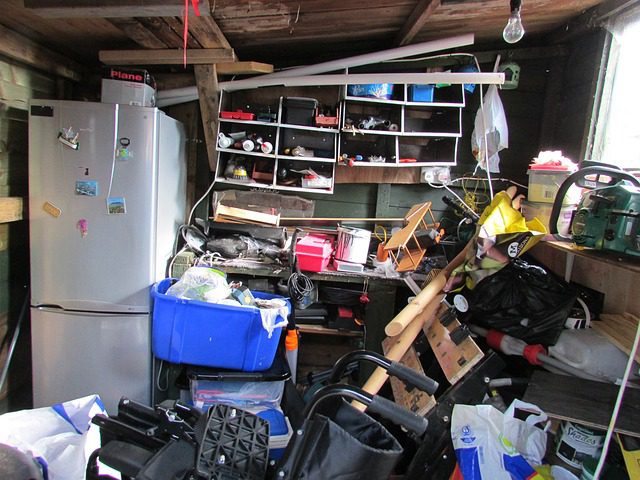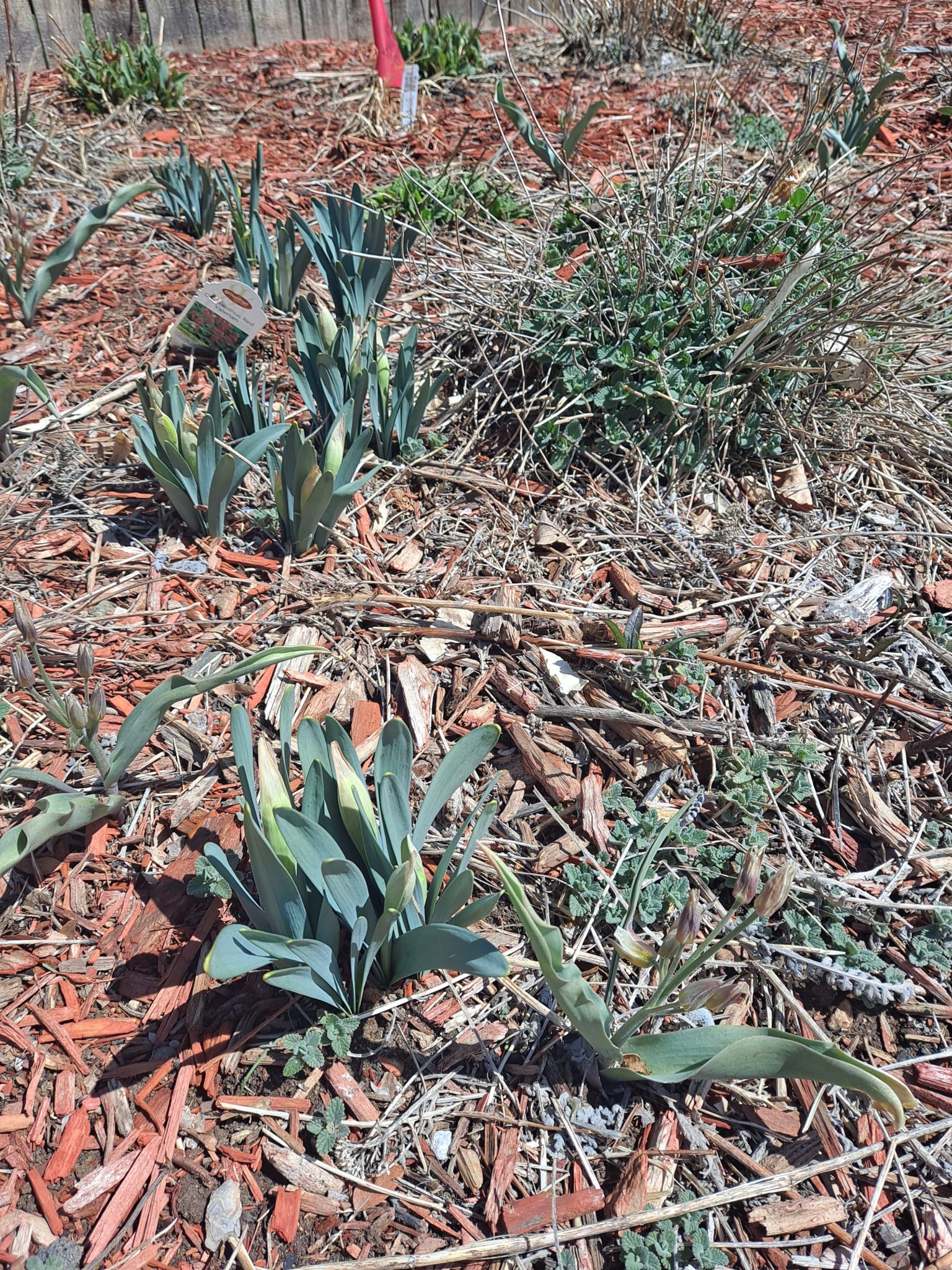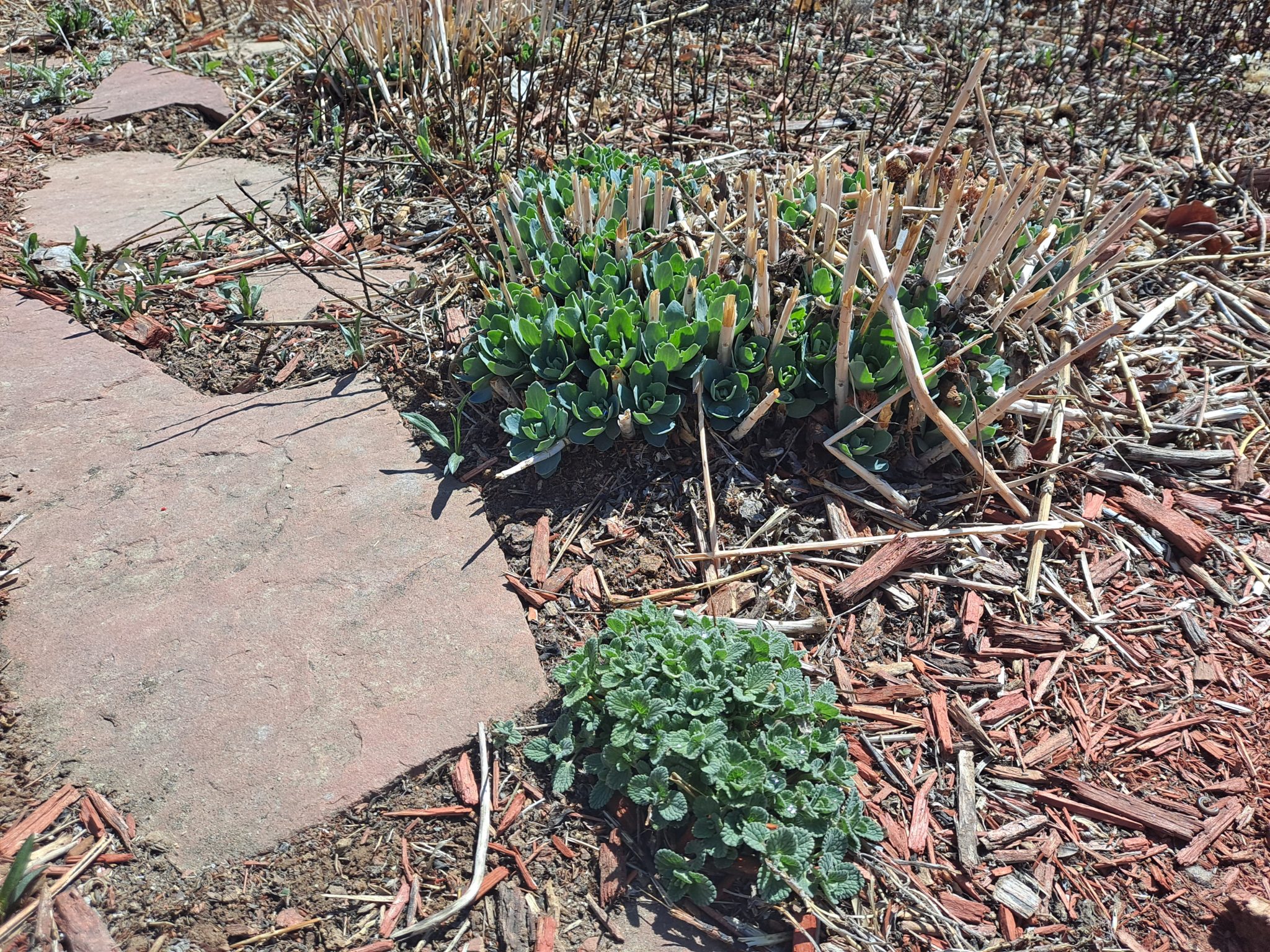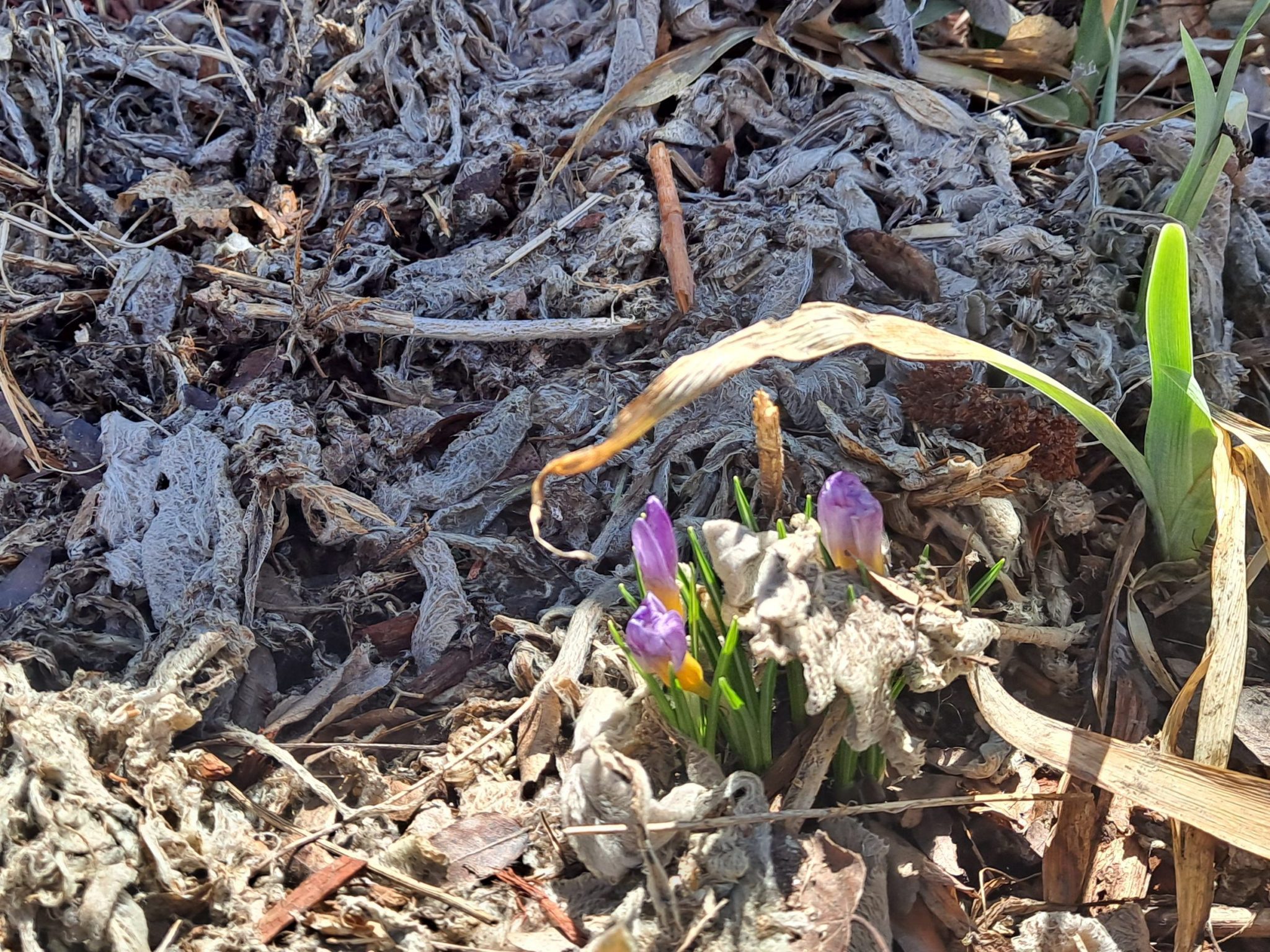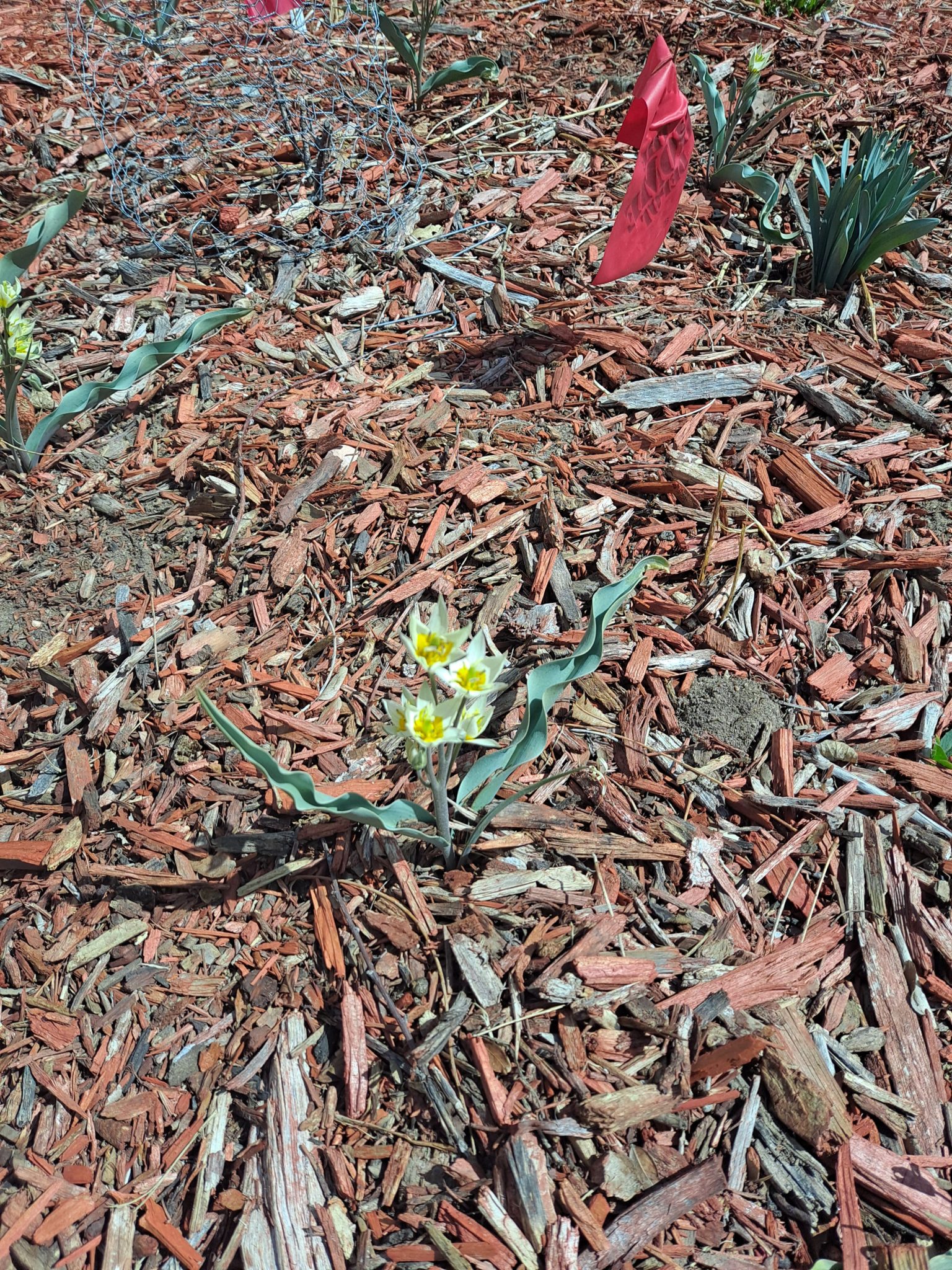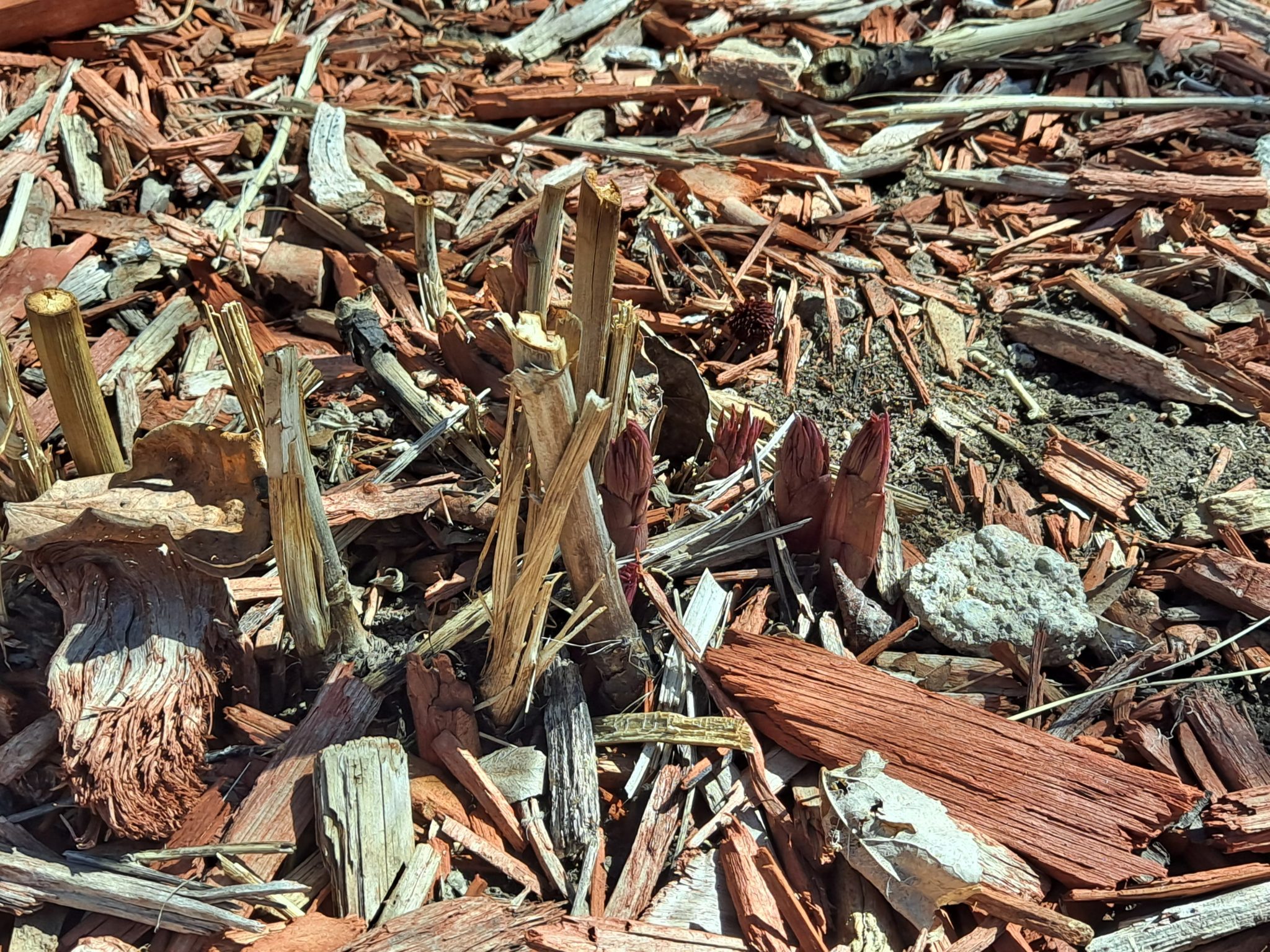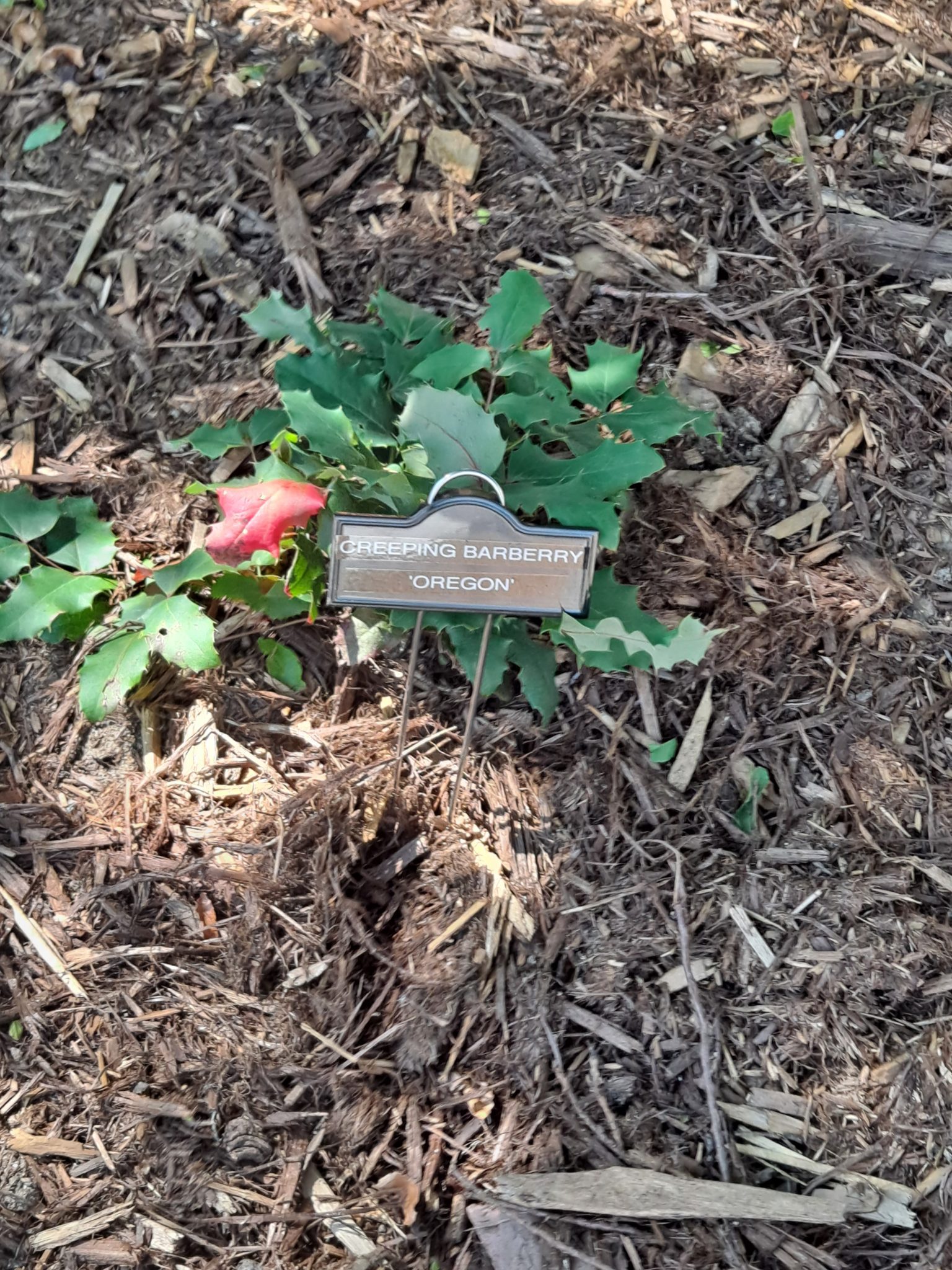
The front yard conversion from lawn to waterwise landscaping has been completed at the Vintage ranch. This project has consumed almost all of my free time. I haven’t been reading, or riding my bike or, as you might have noticed, blogging. Gardening with a deadline is stressful. But the yard passed both city inspections, the paperwork has been submitted, and the first rebate check should arrive in a couple of weeks. We still need to keep the plants watered throughout the hottest months of the year, but otherwise we are done.
I’ve wanted to get rid of the lawn in the front yard for years but wasn’t sure what I wanted it to replace it with, or even how to get started. Now that the project is completed, I am really thrilled with the results.
That being said, I will be blunt and admit that if the city wasn’t offering a rebate, I would never have made the change. For a couple of reasons.
One, it was bloody EXPENSIVE. Gardening is no longer a cheap hobby. Not that it ever was, but not like this. Inflation has hit the gardening world hard. To save money, MrsVintage and I did all the labor ourselves (minus installing the boulders), and I was able to salvage and reuse numerous plants from the old front yard borders. The project still came in at over three grand!
Oh, the pain. THE PAIN!
The other reason is that it was bloody painful as well. I moved 5.5 tons of cobble stone, one ton of crushed granite, probably another ton of cedar mulch, no idea how much weight in sod. Literally blood, sweat and swears. We went through half a box of Band-Aids, half a tube of sunscreen, one and half cans of mosquito repellent and copious amounts of water and sports drinks. Plus, we consumed all the ibuprofen and acetaminophen in the house and smeared so much icy-hot on aching knees and backs that it mixed with our sweat to form a paste.
On the positive side, there was plenty of beer on hand. At least for me. MrsVintage isn’t an ale fan. I found Samuel Adam’s ‘Porch Rocker’ and Lone Tree Brewing’s ‘Red Ale’ to be particularly helpful in my recovery efforts.
Old Age and humility

Ok, before we get to the big reveal, you have to humor me and listen to me whine about gardening as an old fart. After all, while this blog covers such topics as gardening, books, bicycling, beer and more, it is above all else about living life in the autumn years. So, bear with me.
There is no doubt in my mind that if I had attempted this project 20 years ago, or hell, even 10 years ago, I would have finished it at least a month sooner than I did. I still would have been sore and tired, but I would have been able to push through the fatigue. Now, not so much. Getting old is such an ego check.
For instance, I would be knee-deep in work, and I could feel that I was wearing out. I wanted to keep working, but my mind/body monologue would go something like this:
Me: just three more wheelbarrow loads, and I’ll call it quits.
Body: I think we should quit now.
Me: (after first load) just two more to go.
Body: I’m telling you, it’s time to stop.
Me: (after dumping second load) Just one more load to go. I can do this!
Body: I SAID WE ARE DONE FOR THE DAY!
Me: ok.
And it wasn’t just crapping out while working that was humbling. The recovery part sucked too. There were many days where I just couldn’t do the work. I was so stiff and tired I couldn’t will myself to labor in the yard. There was just no gas in the tank. I would rest for a few days, and then I could get back at it.
Nevertheless, we got the project done before the deadline. Now, I can relax in my hammock for the rest of the summer.
Hah! As if.
Let’s hop into the Wayback Machine
With that out of the way, let’s go back to last September to see what the front yard used to look like. As historians like to say, you’ve got to know where you started from to understand where you are at.


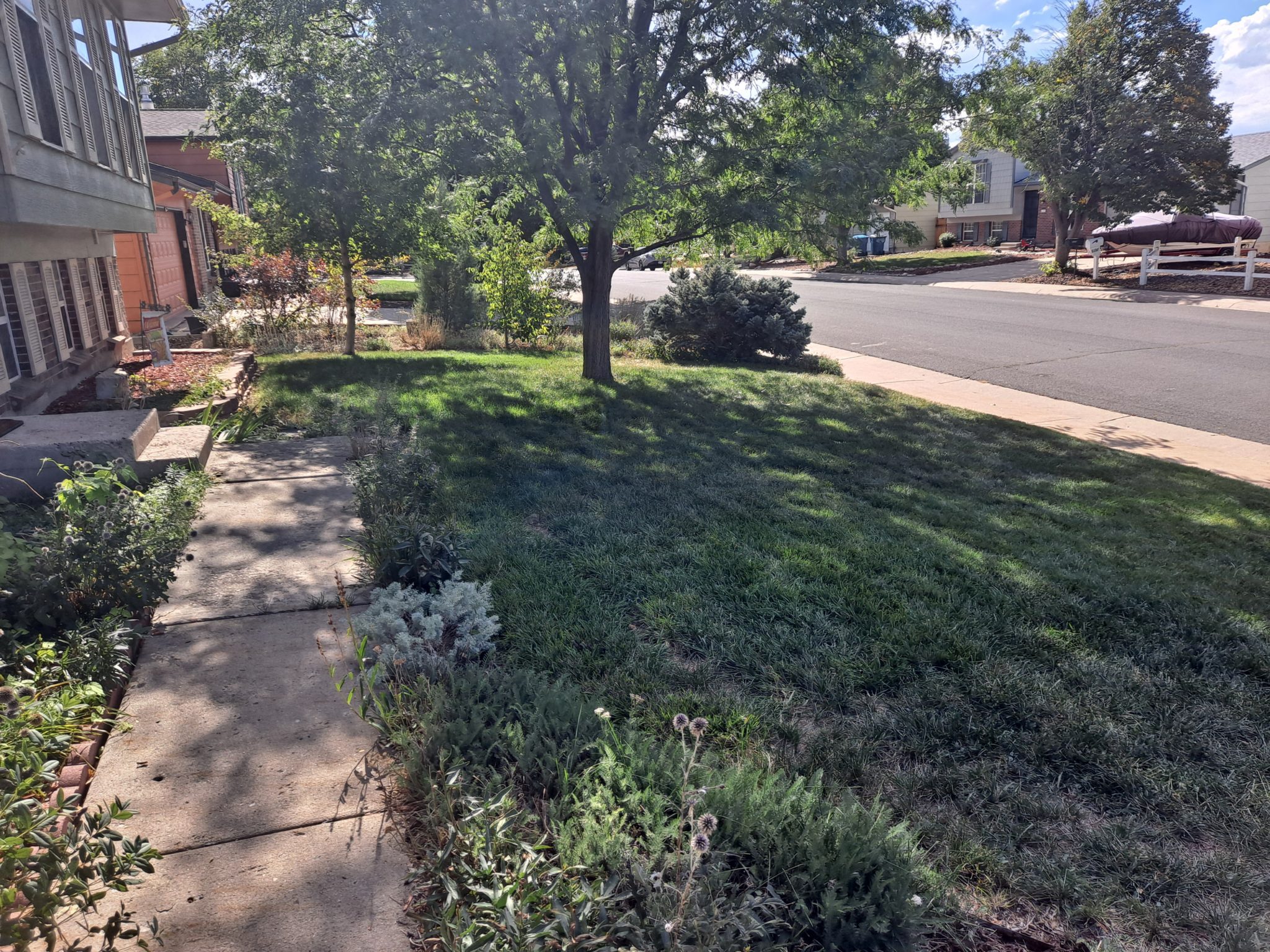
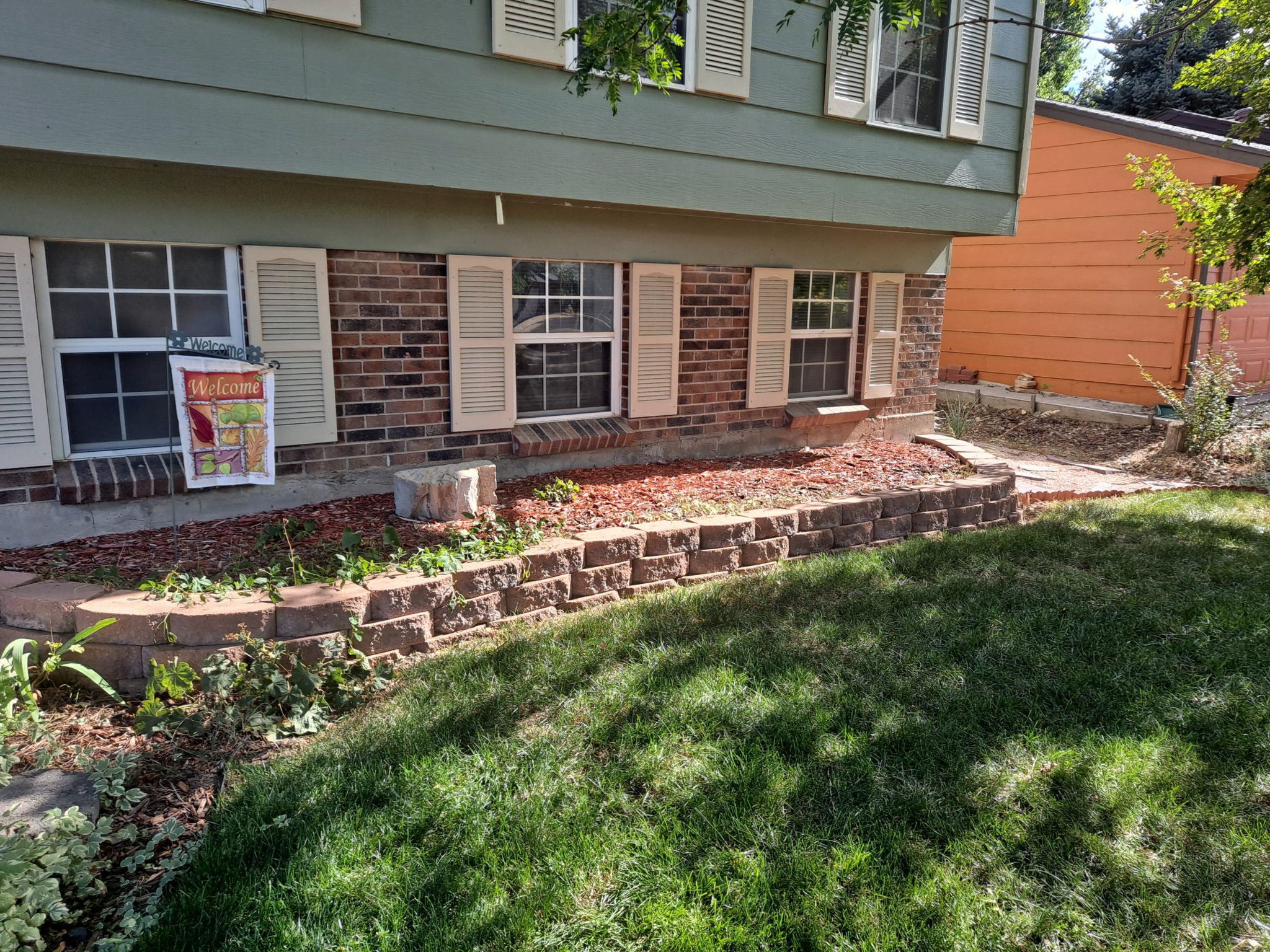
It’s a very nice yard. Obviously well maintained and cared for. While there are a few burn spots here and there, it’s for the most part green and lush.
It’s also a water hog and a time sucker. Even worse, it’s BORRRIIING (imagine being said in a teenage girl’s voice).
There was no reason to linger out there. The only times MrsVintage and I ever noticed the front was when we were leaving the house or coming home, getting the mail, or when it needed to be mowed. I literally watered, fertilized and aerated the grass just so I could chop it down. Seemed kind of pointless.
At least the back lawn has a purpose. When the offspring were little, they used to play back there all the time. The dogs like to patrol the perimeter. MrsVintage and I love spending time hanging out on the patio on warm summer evenings and cool autumn afternoons. The back lawn and garden is our outdoor sanctuary.
The front yard was a cipher. In the words of Gertrude Stein: “there’s no there there”.
Progression
Now let’s take a look at the work progression. Back in March I posted an update on how the renovation was going (Initial progress on the front yard renovation).
Then in April I posted at how I had put down cardboard to kill the lawn (Progress is progressing on the front yard renovation). Not a good look.

Eventually, I got some mulch down to cover the cardboard. Then the real work began.


At this point, I no longer had time to post updates. I was busy taking measurements, buying metal edging, purchasing plants and pricing boulders and other hardscape materials. Once I had dug and installed the edging, MrsVintage and I needed to remove some of the sod from around the future garden borders to make way for the cobble, and to dig out the grass and dirt from where the crushed granite path needed to go.
I also needed to salvage some plants to put into the new landscape, or plant elsewhere in the backyard.
This work was brutal and tedious.
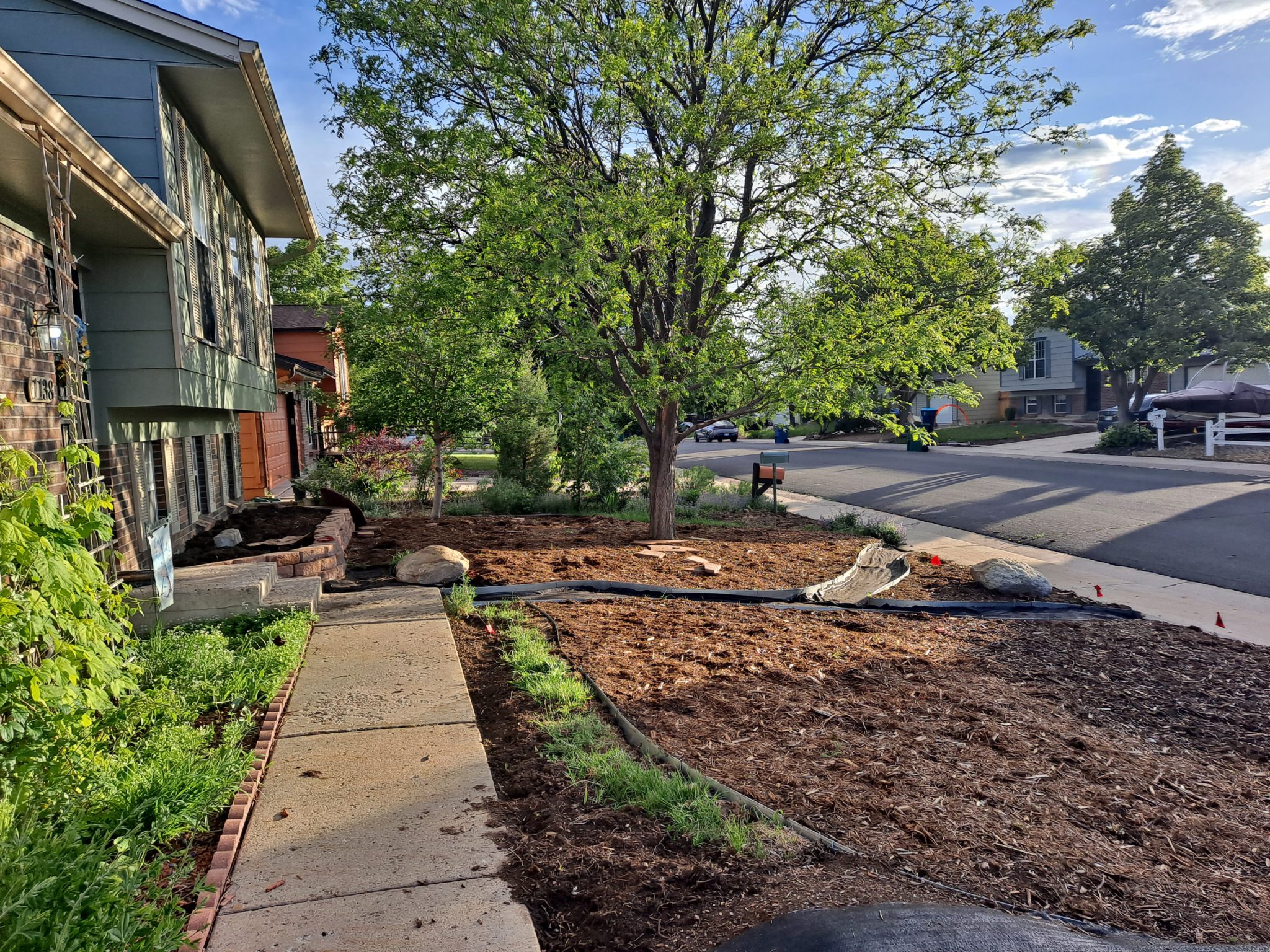
After weeks of grueling labor, we reached the point we could put the landscape fabric down for where the rocks would go. Once we got the fabric down, I purchased three boulders from a landscape supply company. Installing those was an experience, let me tell you. The driver/boulder installer was very good at his job. But I did have to help him roll the smallest boulder that’s near the front door into place. His forklift couldn’t get up the slope of our front yard because it was so wet from spring rains.
I seriously was concerned that I gave myself a hernia.
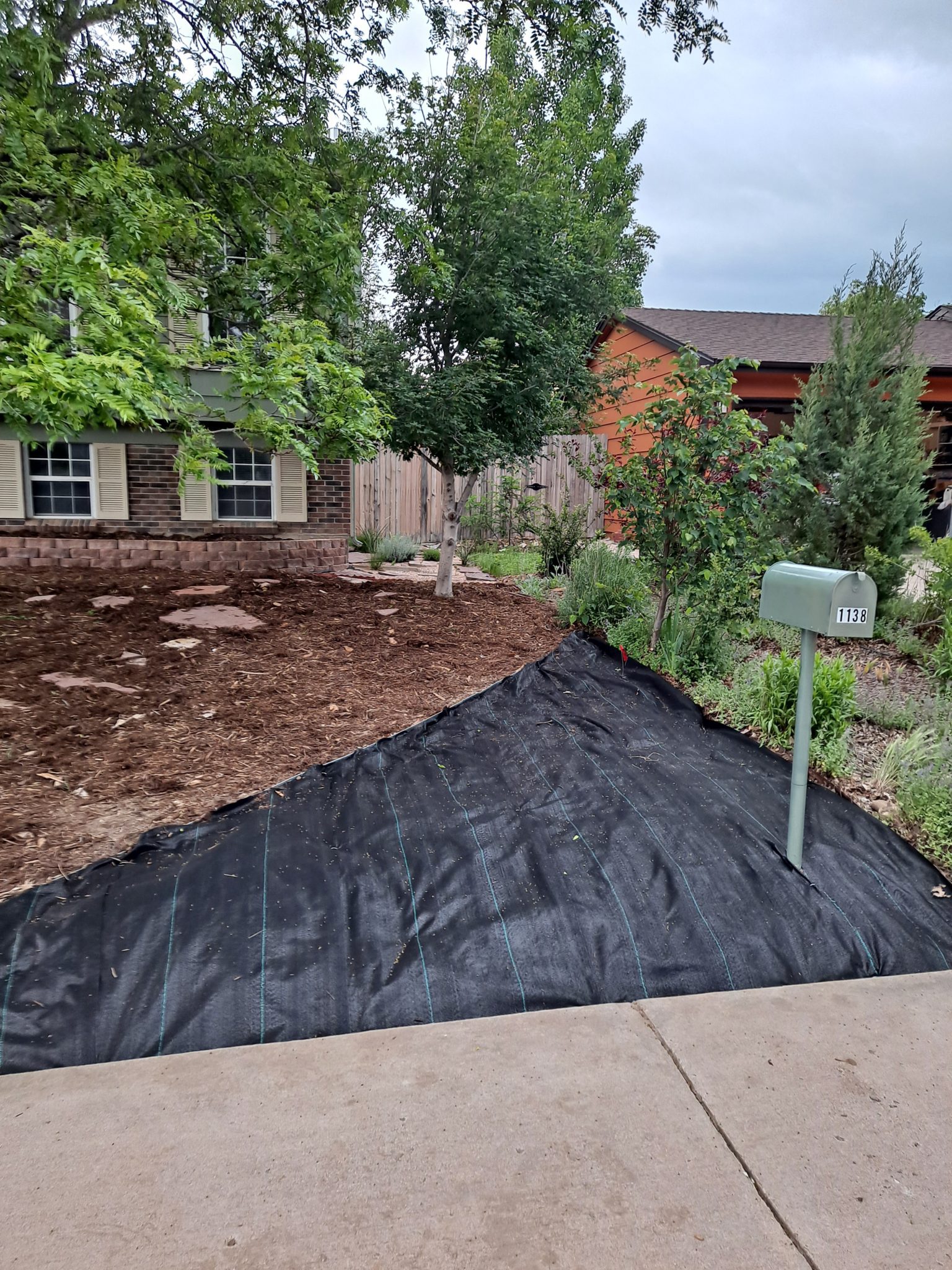
I went back to the same landscape supply company to purchase the ton of tan breeze (tan colored crushed limestone). Surprisingly, I was able to put it down and rake into place in one day. Of course, this was one of those times when my body informed me that we were taking an short vacation.
With that done, it was finally time to plant the plants. I normally like planting. There’s something so satisfying about seeing a living thing in a place that used to be just a blank piece dirt. I’m not such a fan of planting when I’ve got a hundred of the things to get into the ground. Then it becomes a pain in the ass. Literally and figuratively. My hammies and glutes were sore for days.

With everything in place, it was time to contact the city water department and have them inspect the project. They wanted to make sure I had the correct plants in the correct spots, and that all the landscape materials were properly installed.
We passed with flying colors. No corrections needed to be made. Now we could purchase and install the cobble and finish the project.
We had the cobble delivered on July 5th and spent the next four days moving five tons of rock into position. On July 10th, I submitted five photographs, all the receipts and expense sheets, and an IRS form for final approval.
Once again, we passed with flying colors. No need to make any changes.
And now, without further ado…drumroll please…the Vintage front yard!

Now the yard has interest. Now there is a reason to linger out front. It may not be everyone’s cup of tea, but nobody can say it is BORRIIING.
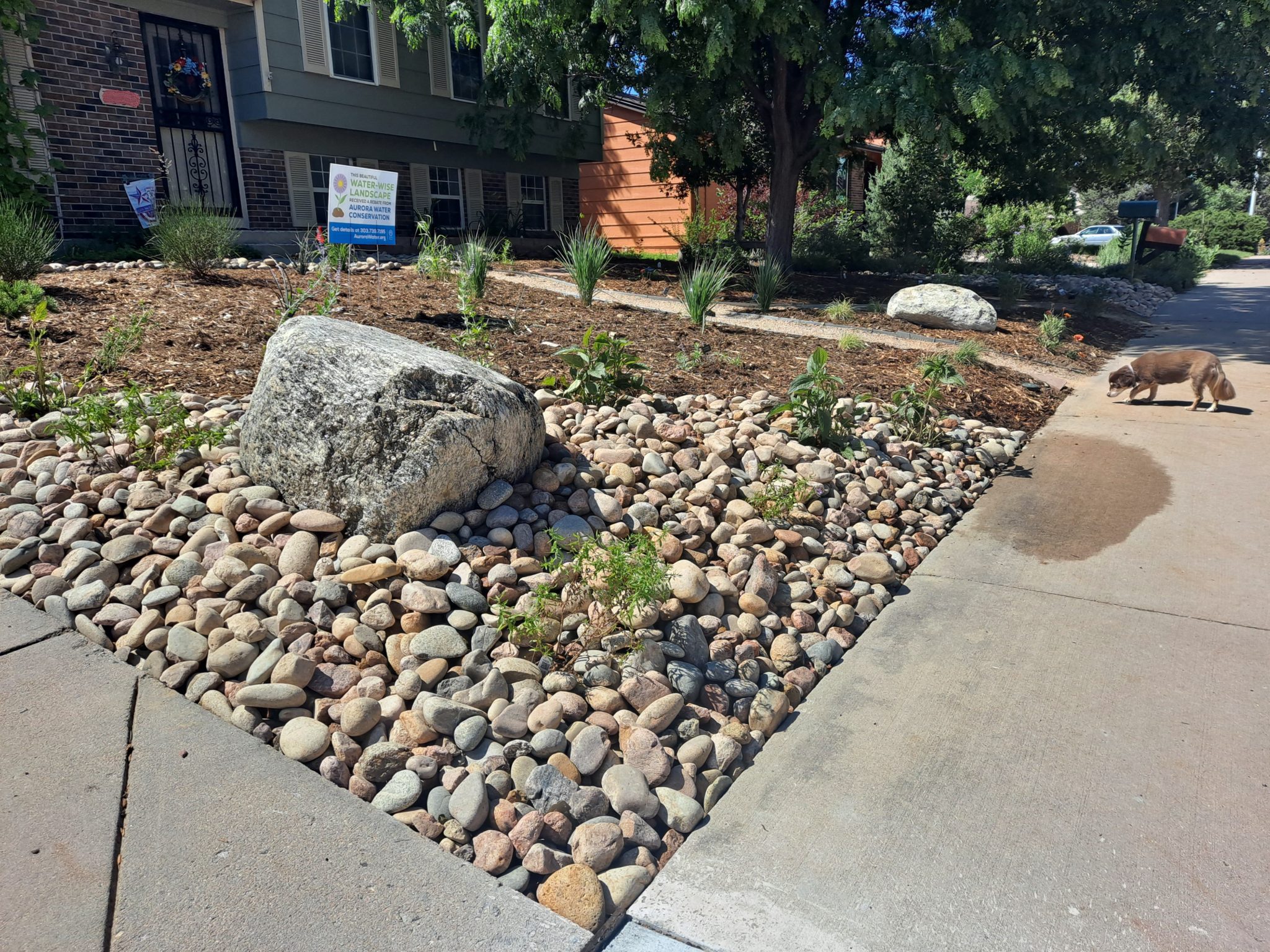
Ok, I admit that the plants don’t look like much now. But in a couple of years, they will start to reach their full potential. There’s an old garden adage, that I only learned a couple of years ago, regarding newly planted perennials: 1st year sleep, 2nd year creep, 3rd year leap. In other words, it takes perennials (plants that come back year after year) three years to get fully established in their new homes.
Note that this adage doesn’t apply to trees, shrubs, annuals or veggies. Those plants have their own cycles.
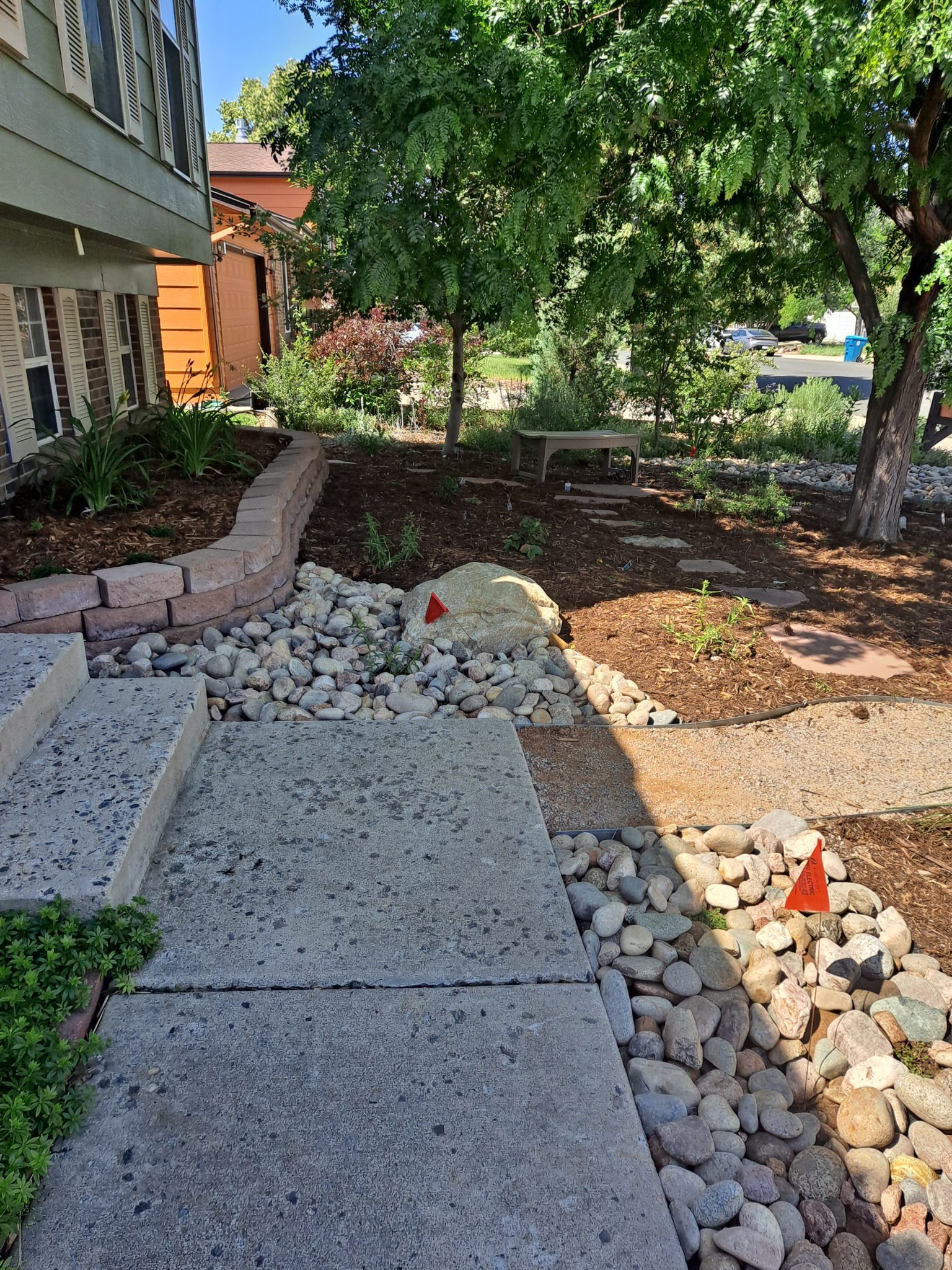
We used some materials that we had on hand that were left over from other projects. In the photo above, note the flagstone pathway that leads to the bench. These flagstones were leftovers from the patio we installed in the backyard years ago. The raised bed on the left was there before, but we had extra bricks lying around cluttering up the place. So, I added another layer and filled the bed with more soil.

There is actually a theme to the design. The left side, which is in sun almost the entire day, is mostly composed of plants you would find in prairie environments. Tall prairie grasses, such as little bluestems and switchgrasses, mingle with sages, asters, black-eyed susans and yuccas.
I love the sight of an expanse of tall grasses swaying in a breeze. It’s hypnotic, and very similar to the sight of ocean waves rolling into the shore.
The pathway evokes a dirt trail that wanders through the prairie setting. It reminds me of the paths my childhood buddies and I would wander along during our summer adventures so many years ago.
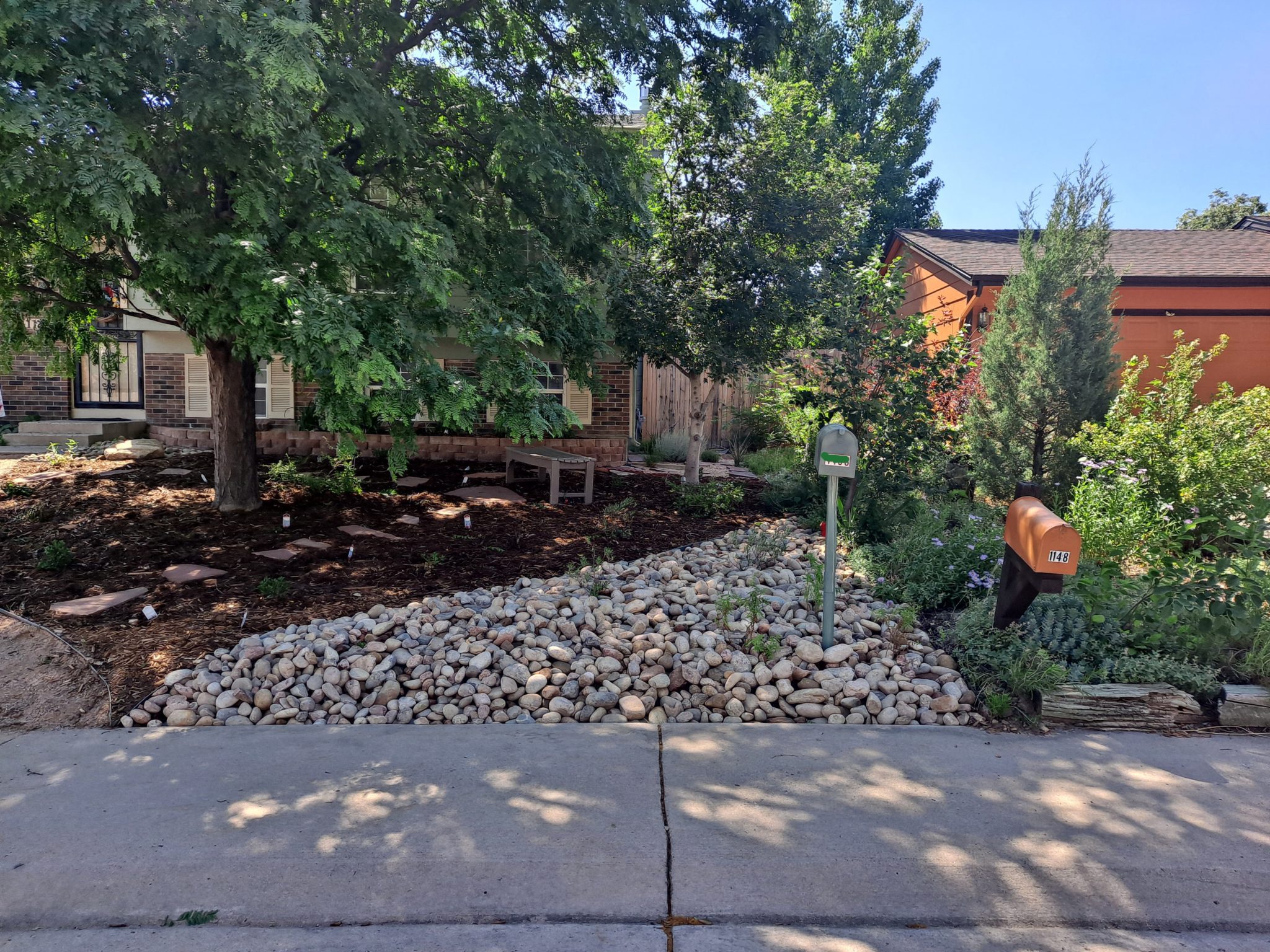
The cooler, shadier portion of the yard is supposed to harken back the trees and shrubs that lined the banks of creeks and streams, where my buddies and I whiled away the hours hunting for crawdads, resting in the shade after a long bike ride, or sometimes just doing nothing at all.

Having a place to sit was a big priority for me. Several years ago, MrsVintage and I made the desert garden on the side of the house. It’s doing great, but we never went out to see it. So having a destination in the new landscape was important. A destination that allowed us to sit and enjoy the scenery was the obvious choice.
Here in the shady section, you will find a Bigtooth maple (Colorado native), coralberry, manzanita, and creeping grape (not a real grape). I’m going to plant a few columbines in this area on my own dime.

While it will take some time for the plants to mature, the daylilies we planted in the raised bed are already putting on a show.
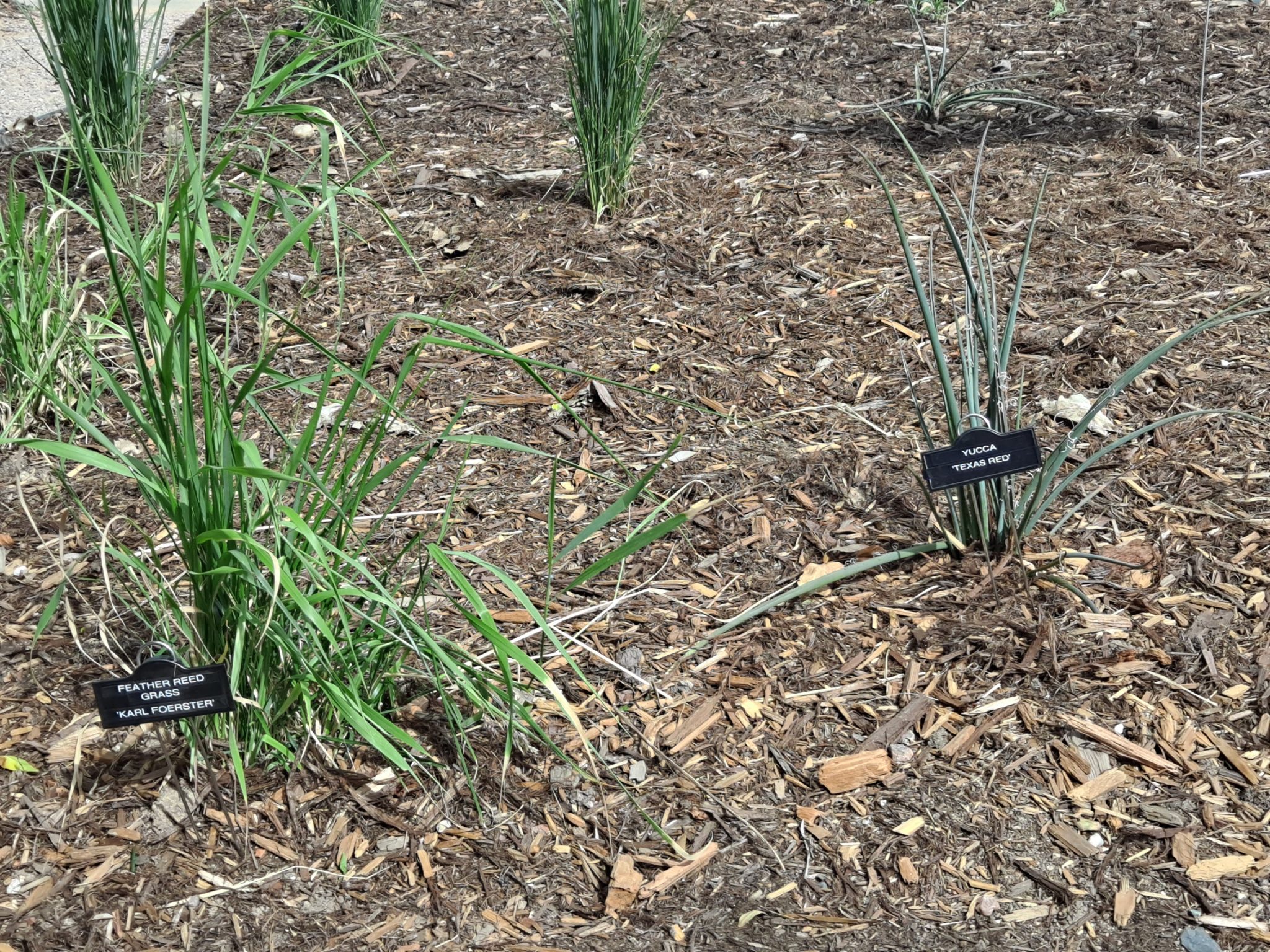
Finally, I was so inspired by the new front yard, I made my own plant labels to give it a botanical garden feel. I bought some metal labels on Amazon and used our P-touch label maker to create the labels. Looks pretty cool, don’t you think?
I’m seriously considering making a sign inviting people to explore their local neighborhood botanical garden. Maybe others in the area will be inspired to try something different in their own front yards.
More information
If you’re interested in learning more about converting your yard to a waterwise landscape, there is a website devoted to people have converted their lawns to a waterwise landscape: Inspiration Hub – Waterwise Yards. It’s Colorado specific, but there are some clever ideas that could be suitable in many parts of the US.
Pam Penick, garden author and blogger, also has a good website on waterwise gardening. She’s based out of Austin, TX, but I find her blog interesting: Digging | cool gardens in a hot climate (penick.net)

